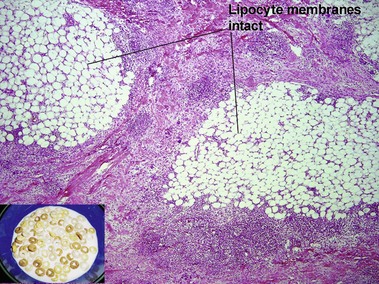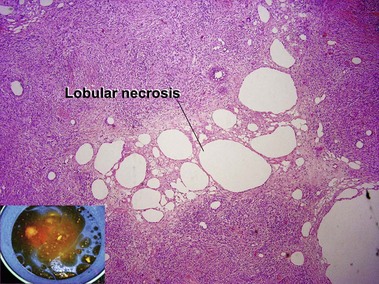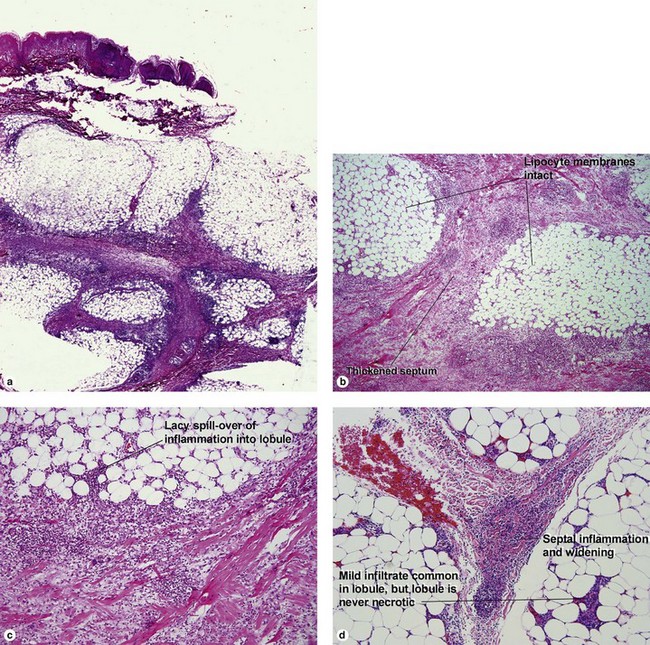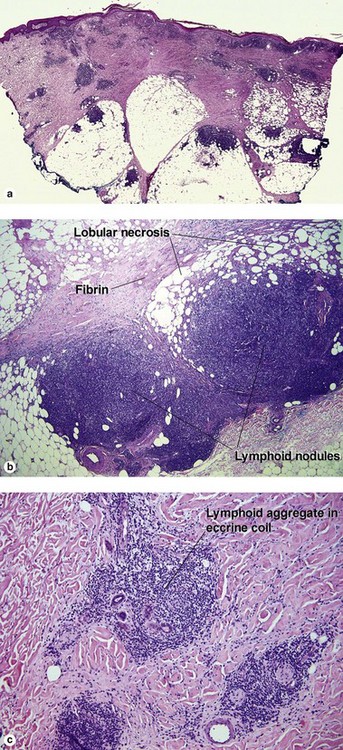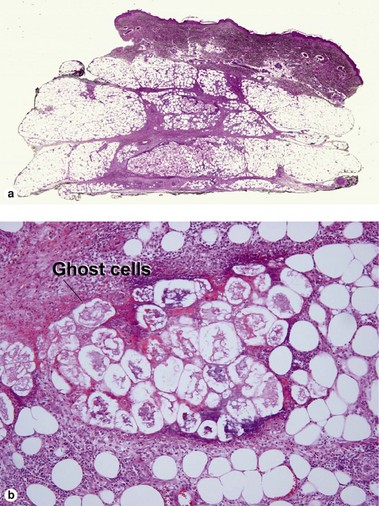Chapter 16 Although connective tissue disease can produce less specific patterns of granulomatous panniculitis, the features noted above are highly characteristic of lupus panniculitis. Plasma cells are common in the nodular lymphoid foci. Overlying features of lupus erythematosus may be present. The overlying dermis may be sclerotic. Lipomembranous changes may be present (eosinophilic “frost on the windowpane” or “ferning” pattern at the edge of the lipid vacuole).
Panniculitis
Lobular panniculitis
Lupus panniculitis (lupus profundus)

